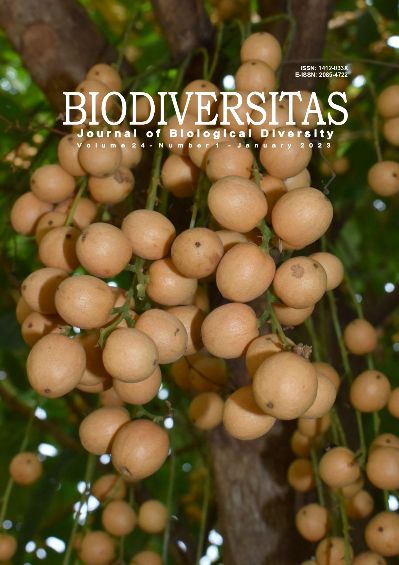The diversity of utilizations, tapping flow discharge, and conservation of sugar palm (Arenga longipes Mogea) cultivated in Langkat, North Sumatra, Indonesia
##plugins.themes.bootstrap3.article.main##
Abstract
Abstract. Fadhilla S, Hakim L, Agustian A, Lubis YS, Siregar AW. 2022. The diversity of utilizations, tapping flow discharge, and conservation of sugar palm (Arenga longipes Mogea) cultivated in Langkat, North Sumatra, Indonesia. Biodiversitas 23: 122-132. Sugar palm (Arenga longipes Mogea) is one of the Non-Timber Forest Products (NTFPs) cultivated by the forest community in the village of Sei Limbat, Selesai Sub-district, Langkat District, North Sumatra. It is a plant with several benefits for economic development and a source of livelihood. Therefore, this research aims to determine the morphology of sugar palms through the identification of the species developed by the community, potential use, economic value, and tapping productivity. The morphological identification was used to determine the species of sugar palm developed by the community. The multiple utilization and economic values were identified and analyzed using the result of in-depth interviews through questionnaires. In this study, it was found that the diversity of uses of the palm plant included the utilization of palm sugar (consisting of large palm sugar, small palm sugar, liquid sugar and powdered sugar), utilization of black palm fiber, and conservation purposes. Based on the morphological identification, the species of sugar palm cultivated by the forest community was Arenga longipes Mogea. Furthermore, the tapping productivity was influenced by the panicle circumference, tree height, and flower height from the ground. The tapping productivity was calculated using daily production, which was correlated with sugar palm tree morphology. Based on the result, it can be concluded that the species identified is A. longipes which has a variety of uses and the tapping productivity was influenced by plant morphology.

